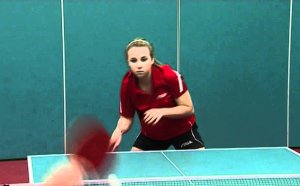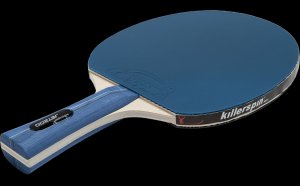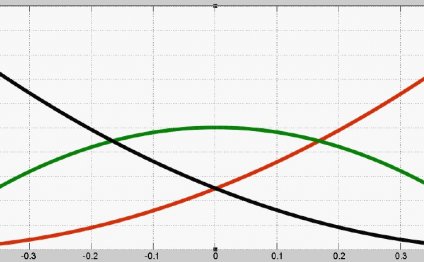
Table Tennis spin Techniques
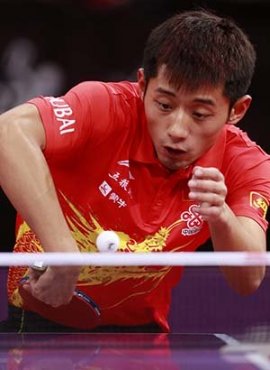 Spin: The hidden side of table tennis
Spin: The hidden side of table tennis
Discover How to Impart Spin and Return Spin Strokes
by courtesy of the ITTF
In the early days of table tennis (1920s to 1950s) most players used a traditional "hardbat" which consisted of pimpled rubber, without sponge, on a wooden blade.
This meant that the game was predominantly about ball placement and control, rather than spin.
But with the introduction of sandwich rubber in the 1950s it became possible to impart much more spin onto the ball - and that started a major change in the way that table tennis is played today.
The use of spin is now THE most dominant factor in the sport of table tennis - yet it remains largely hidden from view for casual spectators of the game.
But for any player who wants to improve their game, being able to impart spin and play against spin is one of the most important table tennis techniques they'll need to master.
So let's take a look at how spin is imparted onto the ball, what effect it has on the ball and how to counteract spin strokes.
Contact Me for FREE Personalised Coaching
Improve your game with my FREE personalised coaching
^ ^
But it's important that you...
Learn the Basics First
Being able to play and return spin shots is an advanced technique, so before you learn these techniques it's important that you master the basics of table tennis first, such as the, the four basic and the .
When you've mastered the basics, you'll then be ready to move on to this more advanced level of table tennis.
Practice, Practice, Practice
The modern game is dominated by players who use an aggressive attacking, offensive style of play and they can impart a lot of spin onto the ball, so dealing with your opponent's strokes can be very difficult.
The speed at which the ball approaches you may not allow you sufficient time to know how much spin is on the ball, but with practice you'll become better at determining the type and quantity of spin by watching your opponent's racket movement, the flight of the ball and the logo on the ball.
However, the only way to improve is to practice, practice, practice.
There is no shortcut.
OK, let's take a look at playing with spin...
Spin - the hidden side of table tennis
Spin is imparted onto the ball by using a tangential brushing action with your racket. And the faster your racket brushes against the ball, the more spin you'll impart onto it. So, improving your brushing action is crucial if you want to impart more spin onto the ball.
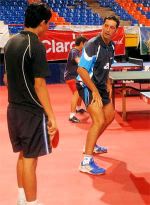 Whenever you hit the ball near its equator with your racket at a 90° angle, the ball will travel forwards more and have less, or no, spin.
Whenever you hit the ball near its equator with your racket at a 90° angle, the ball will travel forwards more and have less, or no, spin.
But when you brush your racket against the ball at an angle of less than 90° using an upward, downward or sideways movement, the ball will spin more and not travel as far forward.
Using will also help you to impart spin onto the ball, whereas using pimpled or anti-spin rubbers will hinder you.
Generally, the ball is struck with either topspin or backspin - although sidespin may also be added.
So let's take a look at each of these table tennis techniques in turn...
1. Topspin
Topspin is produced by starting your stroke below the ball and brushing your racket against the ball in an upward and forward motion.
2. Backspin
Backspin is produced by starting your stroke above the ball and brushing your racket against the ball in a downward and forward motion.
Viewed from above
3. Sidespin
Sidespin is produced by brushing your racket against the ball in a sideways motion.
Depending on whether your racket moves to the right or to the left, you'll impart different sidespin.
However, sidespin is usually imparted in addition to topspin OR backspin. That means, most strokes played with sidespin will either be topspin & sidespin combined, OR backspin & sidespin combined.
So what happens when you impart spin onto a table tennis ball?
Effects of Spin
When you impart topspin onto the ball the forward spin increases the downward pressure on the ball, so after it bounces on the table it will stay low and accelerate forwards.
When a topspin stroke makes contact with your opponent's racket, the topspin will cause it to rebound in an upward direction.
When you impart backspin onto the ball the backspin decreases the downward pressure on the ball, so after it bounces on the table it will rise up more and not go as far forwards.
When a backspin stroke makes contact with your opponent's racket, the backspin will cause it to rebound in an downward direction.
When you impart sidespin onto the ball it will move to the left or the right and the ball will bounce off your opponent's racket in the same direction that your racket was travelling when you hit the ball - as shown here -
| Viewed from above | |
| Sidespin imparted by racket
travelling from right to left Opponents return will go left |
Sidespin imparted by racket
travelling from left to right Opponents return will go right |
So let's take a look at...
Reading Spin
So how do you read the spin on your opponent's strokes?
Well, experience certainly helps. You'll find that the more you play, the better you'll become at reading spin, but there are a few general principles that you can use too.
The first thing to do is to watch your opponent's racket angle before and during the time it strikes the ball.
Watching the contact point of the racket on the ball is the best way to observe what spin is on the ball. The angle of the racket will indicate whether it is likely to be backspin, topspin, side-spin or no spin. And with side-spin, the direction of the racket movement before it strikes the ball will indicate whether it has left or right side-spin.
However, all of these visual clues will only give you a general guide because the better players will be able to disguise and vary the spin using similar stroke actions.
Top players therefore also read the spin by watching the flight of the ball and how it bounces off the table. Topspin strokes will keep low, whilst backspin strokes will bounce slightly higher.
Additionally, on return of service or for shots played short over the net, they watch the logo on the ball as it bounces on the table. If the logo is visible, the serve or stroke probably has no spin or minimal spin, whereas if you cannot see it clearly, it probably has excessive spin.
So let's take a look at how to counteract the spin that your opponent imparts onto the ball.
Returning topspin
Topspin strokes are created when your opponent's racket brushes against the ball using an upward stroke action. This causes the ball to accelerate and dip due to a combination of ball rotation and air resistance.
After the ball makes contact with your racket, the topspin will cause it to rebound in an upward direction. So, to return a topspin stroke you will have to counteract this upward motion by either...
RELATED VIDEO
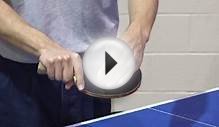
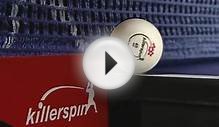
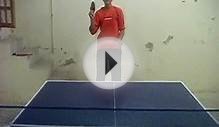
Share this Post
Related posts
Forehand topspin Table Tennis
This stroke is the first forehand topspin stroke taught to the beginners. Offensive players use this stroke in order to prepare…
Read MoreKillerspin Table Tennis Rackets
Table tennis is a sport that can be enjoyed by individuals of any age and physical ability. Top table tennis players are…
Read More
